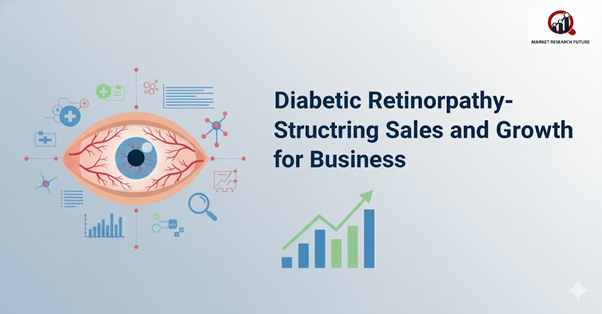Diabetic retinopathy: Structuring Sales and Growth for Business

Overview of the Diabetic Retinopathy Market
With the growing geriatric population across the globe, the scope of diabetic retinopathy is rapidly increasing. The global diabetic retinopathy market, thus, is expected to witness a significant drive through the forecast era, adhering to a moderate CAGR of 6.72%. The value of the sector will change from USD 8.14 billion in 2024 to USD 16.65 billion by 2035.
Diabetic retinopathy is a condition in which blood sugar levels remain too high for the body to process correctly. It can lead to blurred or reduced vision and, if untreated, may result in partial or complete blindness. Managing blood sugar levels is essential to prevent the condition from worsening.
This disease damages the retina and can affect the surrounding tissues in the eye. It may cause pain, pressure, or visual impairment. Diabetic retinopathy is a progressive complication of diabetes caused by persistent hyperglycemia, leading to damage in the blood vessels of the retina.
Damaged vessels may leak or hemorrhage, causing retinal scarring and vision loss. It is one of the leading causes of vision impairment among adults in the working-age population.
Vision loss may result from retinal edema, which occurs when fluid builds up and damages capillaries, or from the formation of scar tissue. The retina, a thin tissue at the back of the eye, contains millions of light-sensing cells that convert images into electrical signals for the brain.
Damage to these cells interferes with vision and affects daily activities such as reading, driving, and mobility. Early detection through periodic eye exams is crucial to prevent permanent vision loss and preserve quality of life.
Regional Analysis
The global diabetic retinopathy market exhibits considerable regional differences. North America leads the market due to high diabetes prevalence, advanced healthcare infrastructure, and widespread awareness of eye care.
Europe also shows strong growth driven by screening programs, healthcare initiatives, and a focus on early detection and treatment. The Asia-Pacific region is witnessing rapid expansion, particularly in India, China, and Japan, due to increasing diabetes incidence, rising disposable incomes, and improving access to healthcare services.
Latin America and the Middle East & Africa present moderate growth, influenced by population growth, rising awareness, and governmental healthcare initiatives. Market dynamics vary by region, reflecting differences in medical infrastructure, prevalence of diabetes, and accessibility to retinal care services.

Leave a Comment